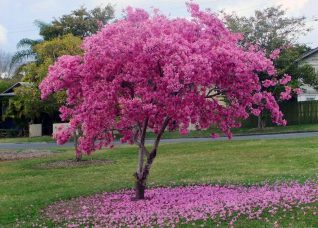
MinerAlert

MinerAlert
Tabebuia impetiginosa
Bignoniaceae
Pau d’ arco, tajibo, tajibo morado, taheebo, tajy pyta, pink trumpet tree, pink ipê, ipê roxo, pink lapacho

Various species of the genus Tabebuia are found throughout Latin America and the West indies (Quattrocchi, 2012; Mabberley, 2008; Roth and Lindorf, 2002; Schultes and Raffauf, 1990).
Principally, the bark from the tree, although the flowers and leaves are also used, depending on the ailment (Quattrocchi, 2012; Duke et al., 2009; Roth and Lindorf, 2002; Schultes and Raffauf, 1990).
The bark of the tree, boiled in water (decoction) is taken as a tea or applied externally as a wash. The leaves and flowers are taken as a tea. Capsules and teas made from the bark are sold in various health foods stores.
The indigenous peoples of various countries in Spanish and Portuguese America use the bark, leaves, and flowers to treat various conditions, including the following: as an abortifacient, anti-anemic, antioxidant, antitumor, anti-inflammatory, anti-diabetic, antifungal, to promote wound healing, against diverse parasites (including Leishmania, Schistosoma, Trypanosoma, and Toxocara), antipyretric (to lower fever), to treat stomach ulcers, and for diarrhea. A tea made from the leaves relieves flatulence, (Aires Ade et al., 2015; Mata-Santos et al., 2015; Quattrocchi, 2012; Berdonces, 2009; Taylor, 2005; Roth and Lindorf, 2002; Schultes and Raffauf, 1990).
One of the foremost active ingredients in certain species of Tabebuia, known as β-lapachone, is a natural napthoquinone derived from the bark, with anti-proliferative properties against various cancers, including pancreatic, pulmonary, breast, and prostate cancers. β lapachone is a topoisomerase inhibitor and could be used as a potential anticancer drug for its prevention, as well as improve the clinical outcome of patients affected with this disease (Bang et al. 2015; Chakrabarti et al., 2015; Jeon et al., 2015; Saroya, 2006).
Safety/Precautions:
Before you decide to take any medicinal herb or herbal supplement, be sure to consult with your health care professional first. Avoid self-diagnosis and self-medication: Always be on the safe side!